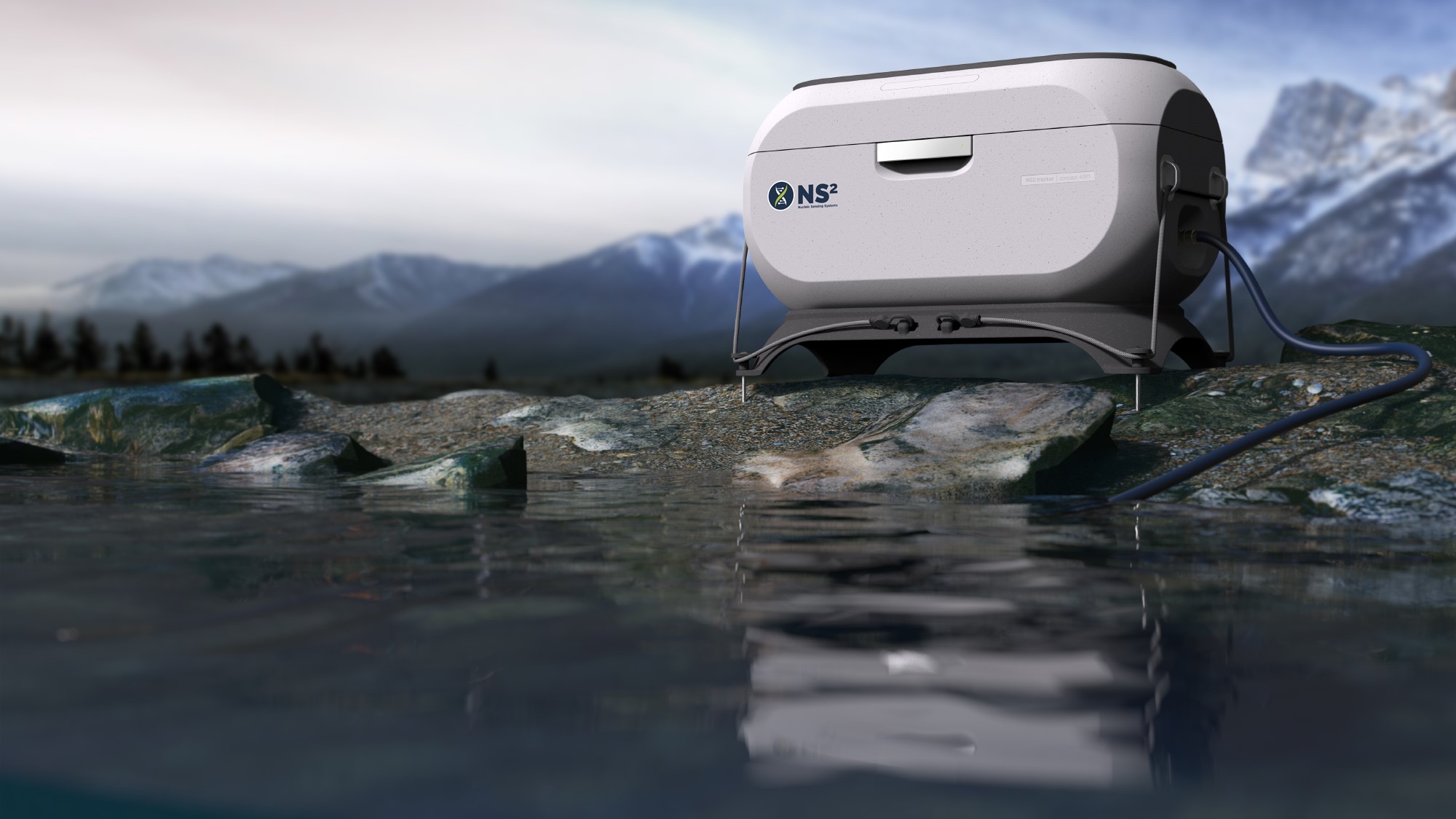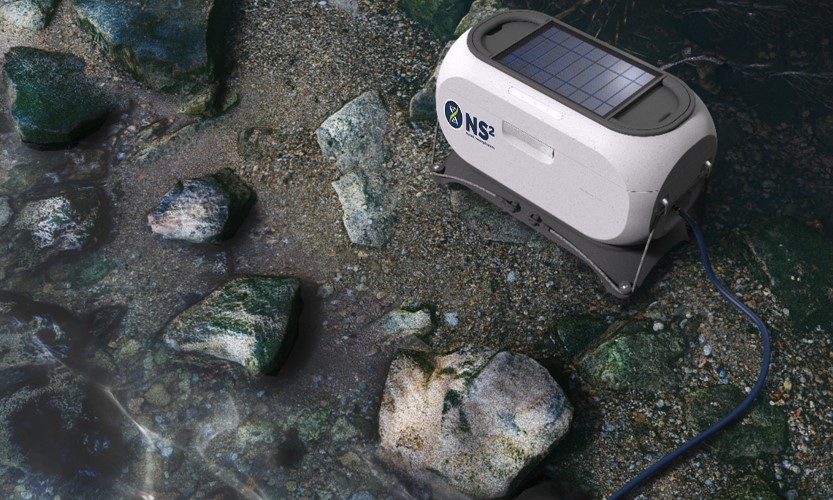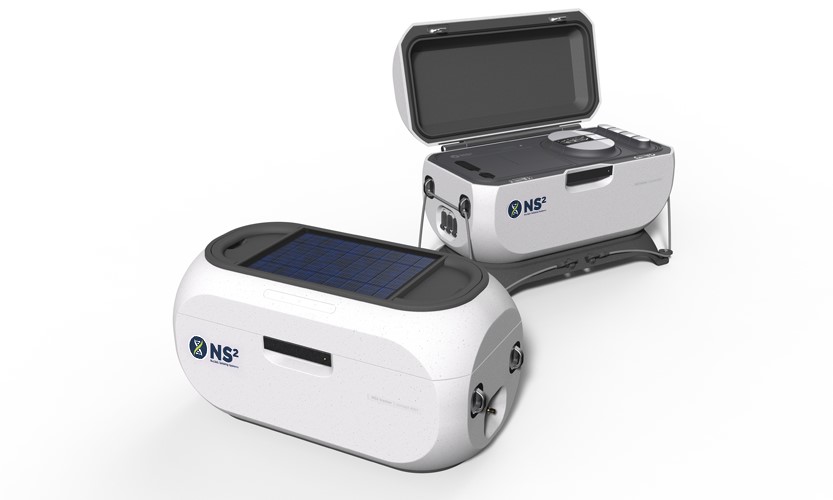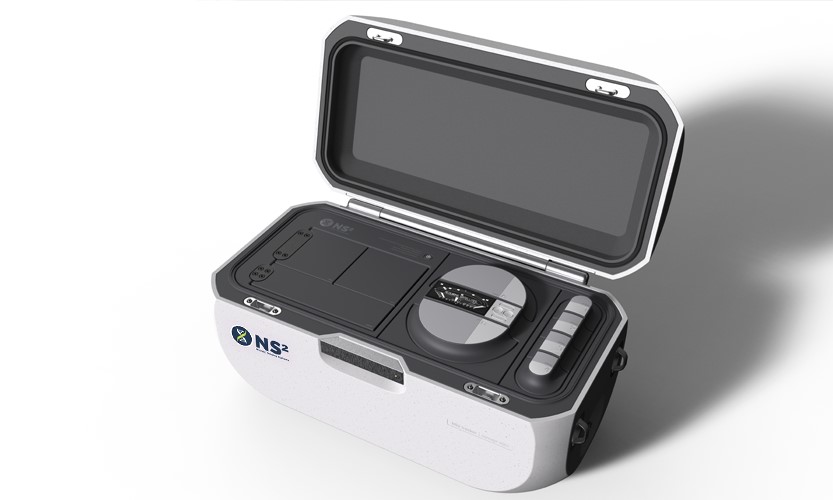NS2 Tracker autonomous biosensor
Conservation and biodiversity
Monitoring biological activity and detecting invasive species and pathogens in water systems.
Contact

Nucleic Sensing Systems
Company Established Year
Who is this solution for
Info
Available

Project Status
Looking to expand internationally
Doing business in
Awards and certifications
Global Aquaculture Innovation Finalist
Recognized for eDNA biosensor improving aquaculture threat detection.
SBIR Phase I Award – USDA
Funded to develop automated biosensor for aquatic microbe detection.
Solar Impulse Efficient Solution Label
Labeled for environmental impact and technological efficiency in water biosensing.
Product description
The NS2 Tracker is an innovative autonomous biosensor designed to continuously sample environmental DNA (eDNA) and RNA in real time, functioning as a genetic 'smoke alarm' for targeted species or pathogens. Utilizing digital droplet quantitative PCR technology, it relays geospatially tagged data to a cloud interface, enabling remote monitoring and analysis.
Deployable in demanding aquatic or environmental settings, the Tracker can detect a single target molecule in a five-microliter sample, multiplex to track multiple species simultaneously, and integrate GPS for generating genetic abundance 'heat maps.' This cutting-edge technology allows resource managers, aquaculture operators, and environmental agencies to monitor biological activity, confirm decontamination, and make informed management decisions.
By automating data collection and providing real-time cloud connectivity, the Tracker facilitates rapid response to emergent threats while reducing the need for manual sampling, laboratory delays, and chemical stabilization. This scalable and efficient solution enhances ecological monitoring, invasive species detection, and pathogen surveillance across water systems.
Key characteristics and environmental benefits
- Continuous real-time monitoring of environmental DNA and RNA
- Detects targeted species and pathogens using digital droplet quantitative PCR
- Ruggedized for deployment in demanding aquatic or environmental settings
- Integrates GPS for generating genetic abundance 'heat maps'
- Supports resource managers, aquaculture operators, and environmental agencies in monitoring biological activity
- Enables confirmation of decontamination and early intervention
- Reduces manual sampling, laboratory delays, and chemical stabilization
- Enhances ecological health monitoring and invasive species detection
- Facilitates rapid response to emergent threats
- Promotes environmentally responsible monitoring practices
About the Company
Ask about NS2 Tracker autonomous biosensor
Hi there! I’m here to help you quickly understand what this green solution is about — without needing to read the full page.
You can ask me things like:
- What problem does it solve?
- How does it help the environment?
- What makes it different?
Let’s explore together!
You can try asking:
Oops, it seems like you're not a member.
Sign up! It's free. You'll be able to read all the articles you like, download PDFs, and get in contact with the respective owners.
Have an account already? Sign in here




